A History of the Infamous RPG-7
October 4th, 2022
8 minute read
Today, there has been much in the news about the U.S.-made FGM-148 Javelin and British NLAW man-portable anti-tank weapons being used in Ukraine to great effect. Both the Javelin and NLAW have been credited with destroying numerous Russian tanks, but the Ukrainians have also been employing the Cold War-era RPG-7 — a weapon that was developed by the Soviet Union to take out western tanks. Now somewhat ironically, the Soviet’s Cold War anti-tank launcher has proven to be extremely effective against the Soviet-designed tanks that the Kremlin has deployed to Ukraine.
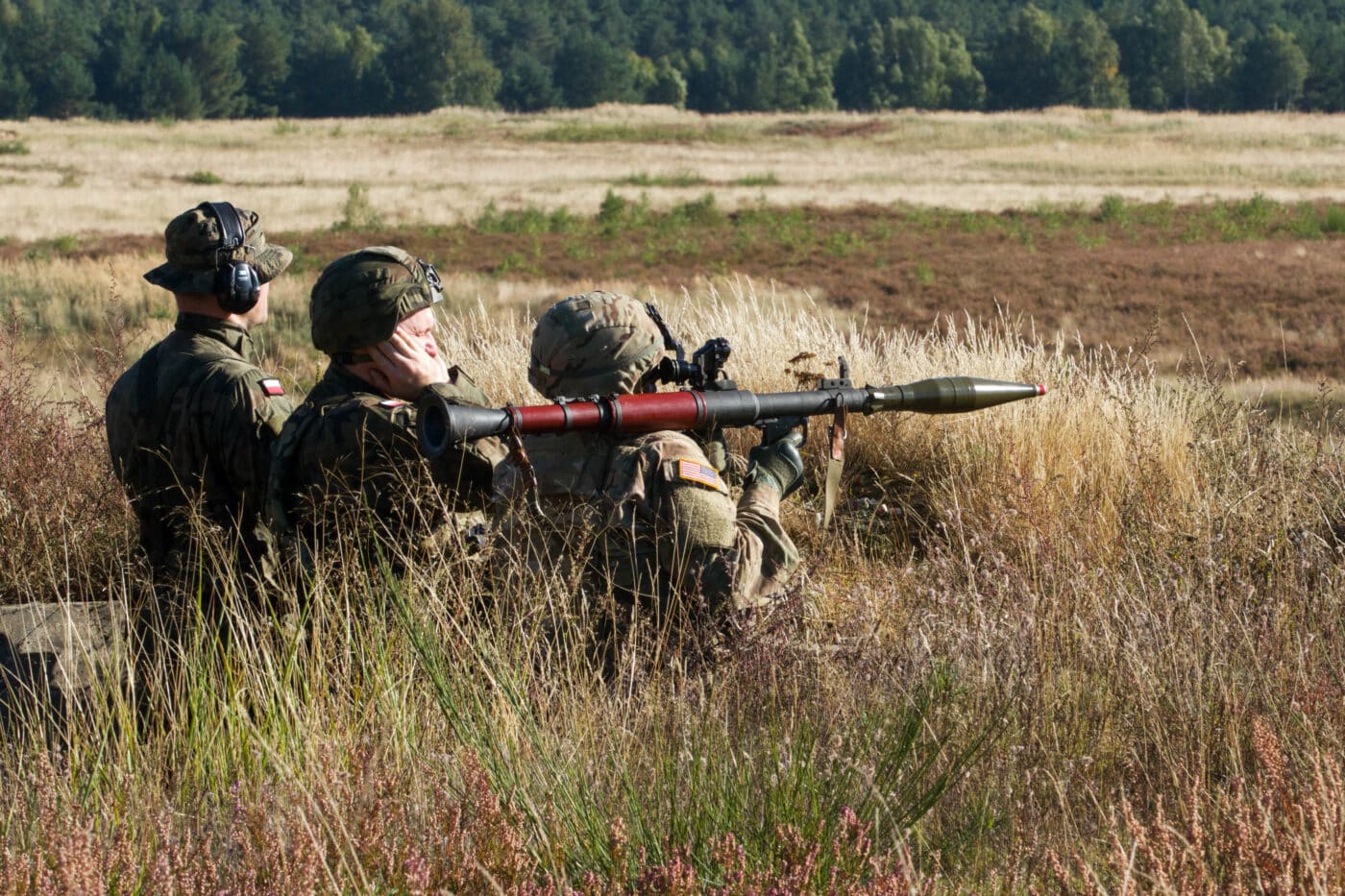
There have been reports that at least one American company has been supplying newly-made RPG-7s to aid the Ukrainian military.
Texas-based AirTronic USA has supplied its modernized version — officially known as the Precision Shoulder-fire Rocket Launcher or PSRL-1, but also known as the RPG-7USA. It was developed as part of a program of record with the United States Special Operations Command (USSOCOM) around a decade ago, and it is now largely provided to nations that had been operators of the Soviet platform.
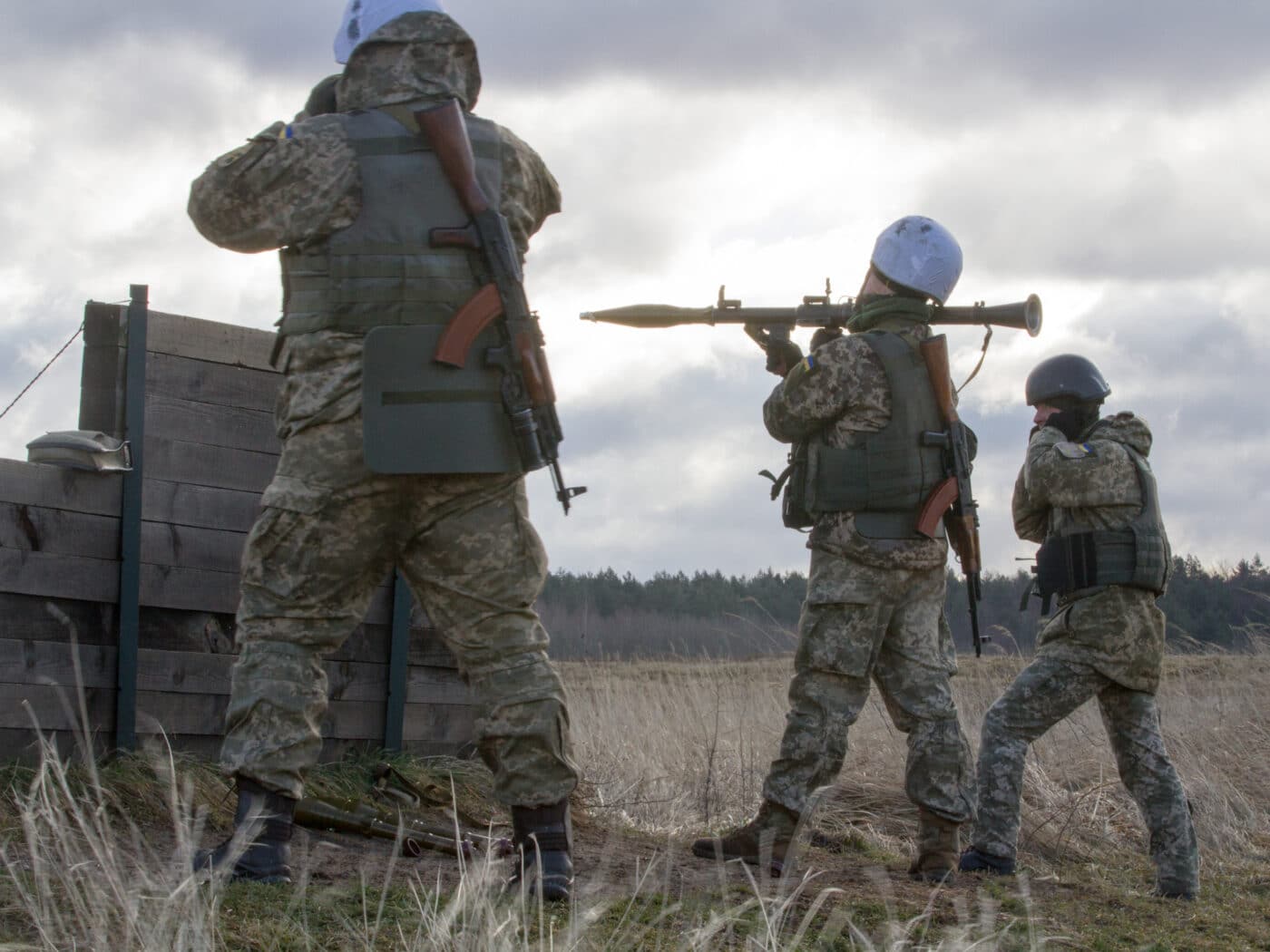
The first confirmed sales were made to the Armed Forces of Ukraine in 2017 — and it saw its first reported use in combat following Russia’s unprovoked invasion in late February. The PSRL-1 has of course been used alongside the venerable RPG-7.
History of the RPG-7
The origins of the RPG-7 actually date back to the Second World War, when the Soviet Red Army saw the success of the German’s Panzerschreck — an improved clone of the American M1 “Bazooka” — and later the single-use Panzerfaust. Soviet designers took elements of each and designed a front muzzle-loading, reloadable anti-tank rocket-propelled grenade launcher. The result was the RPG-1 — but despite a common misconception, “RPG” didn’t actually mean “Rocket Propelled Grenade” but rather “Ruchnoy Protivotankoviy Granatomyot,” which translated to “Hand-Held Antitank Grenade Launcher.”
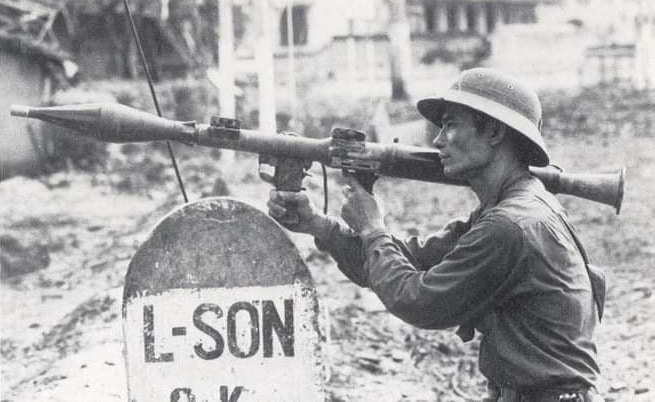
The RPG-1 was never actually completed, but the improved RPG-2 was developed and introduced officially in the late 1940s. Due to production delays, it only entered service in the mid-1950s, and by that time, however, it was already largely obsolete, as its PG-2 HEAT (High-Explosive Anti-Tank) round was ineffective against the increasingly heavy armor employed on most tanks. Despite its limitations, the RPG-2 still saw use around the world during the Cold War.
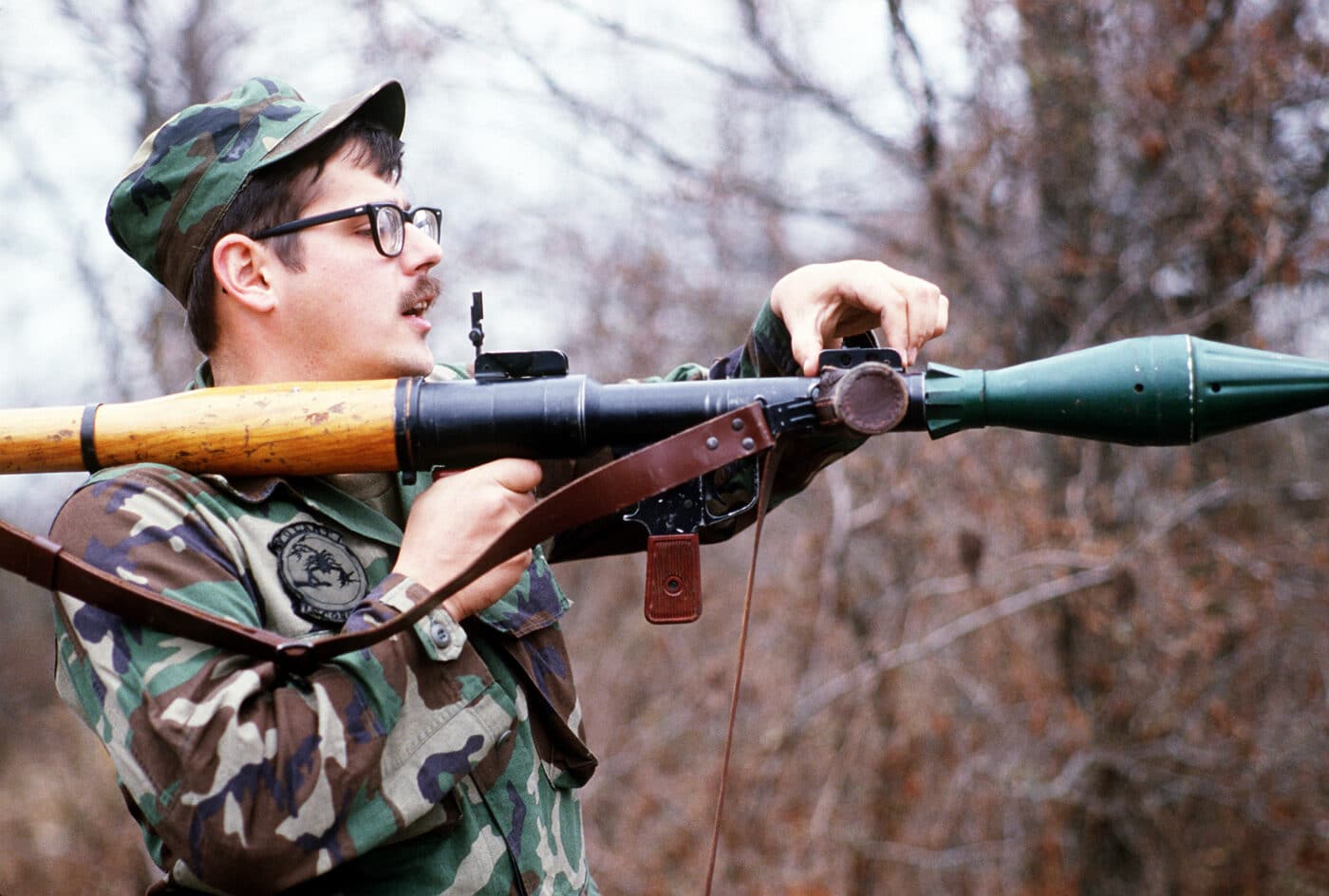
Seeing those limitations, the Soviets sought to improve the RPG-2 and the result was the RPG-7, which was introduced in 1961. It remains largely unclear why the numbering jumped from 2 to 7, except that it has been suggested that a number of prototypes also failed to meet expectations.
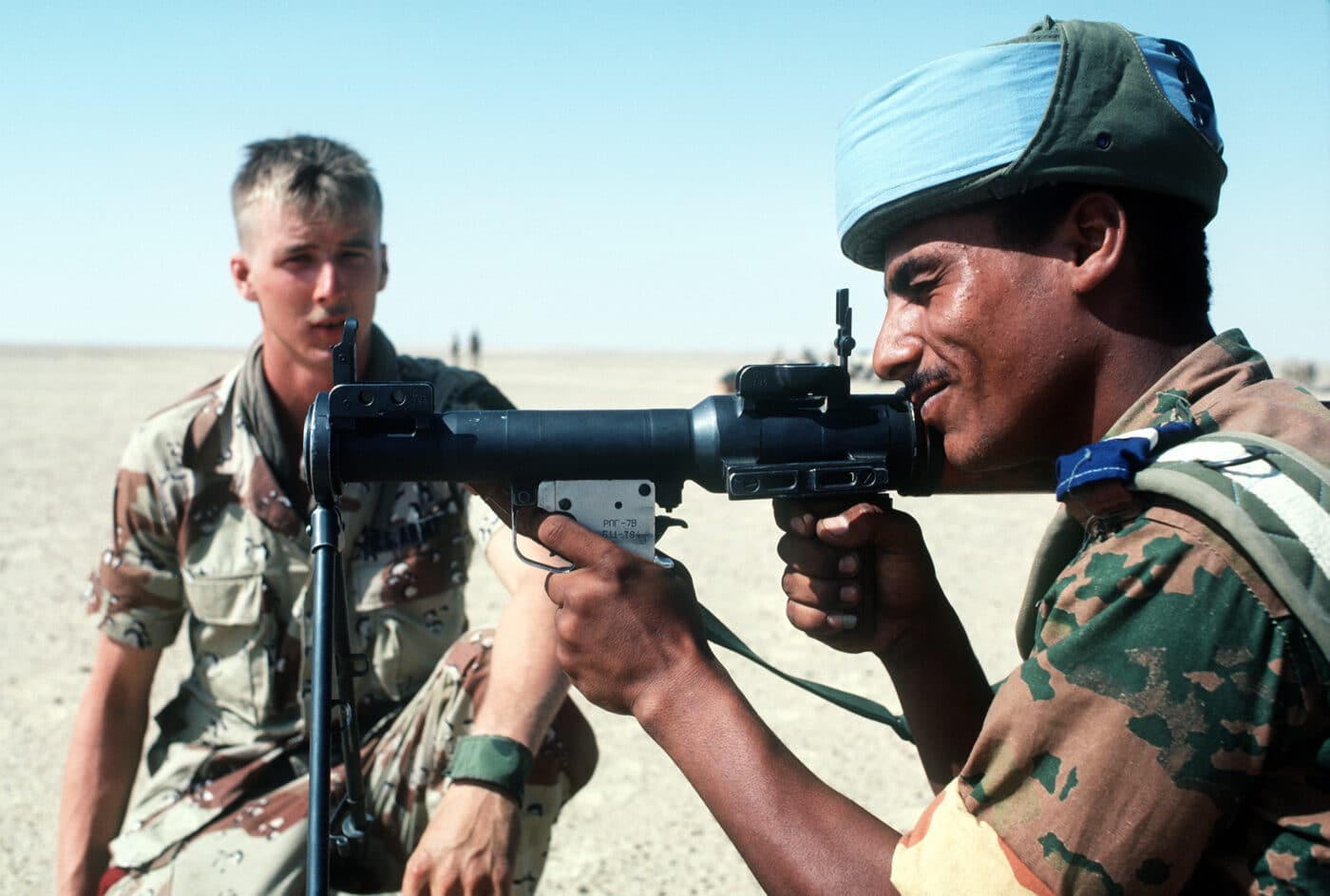
The RPG-7 has gone on to be one of the most famous anti-tank rocket launchers ever developed, and more than nine million have been produced to date. Much like the weapon it replaced, the RPG-7 was designed around a reusable single-shot smoothbore steel tube that had a diameter of 40mm.
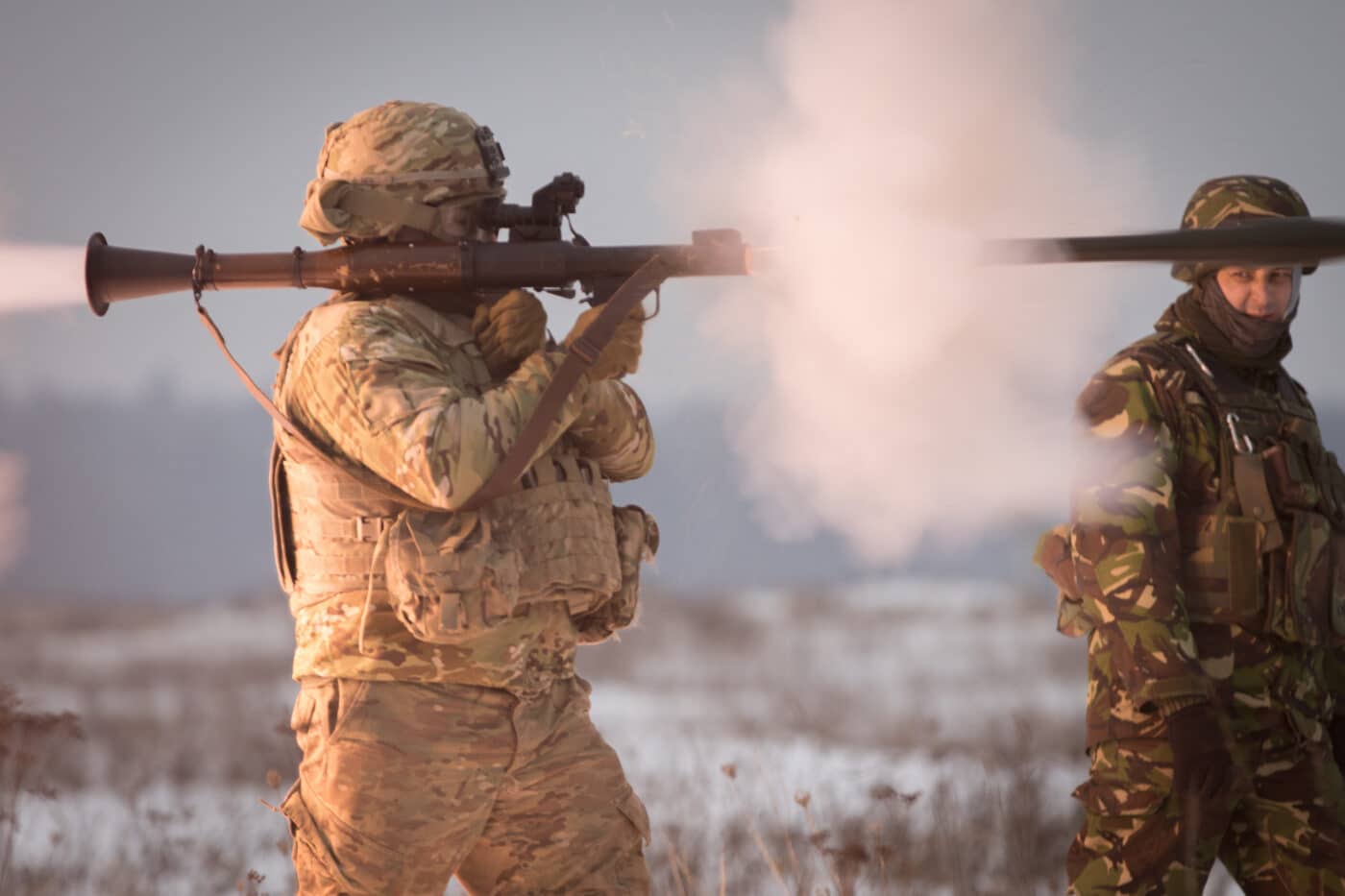
It also features a barrel covered with wood or Bakelite to protect the operator from heat generated by the launch of the rocket. Unlike the RPG-2, it featured a second handle to provide better grip and control of the launcher. It is fitted with iron sights, but a variety of optical and even night vision sights can be employed.
How to Operate the RPG-7
While the RPG-7 does have a noticeable flash and produces both noise and smoke — it has a relatively small back blast, which allows it to be fired from within buildings. The rocket actually takes off slowly from the launcher, and only after about 10 meters does the internal rocket motor ignite, while four stabilization fins fold out, which help keep the warhead on target.
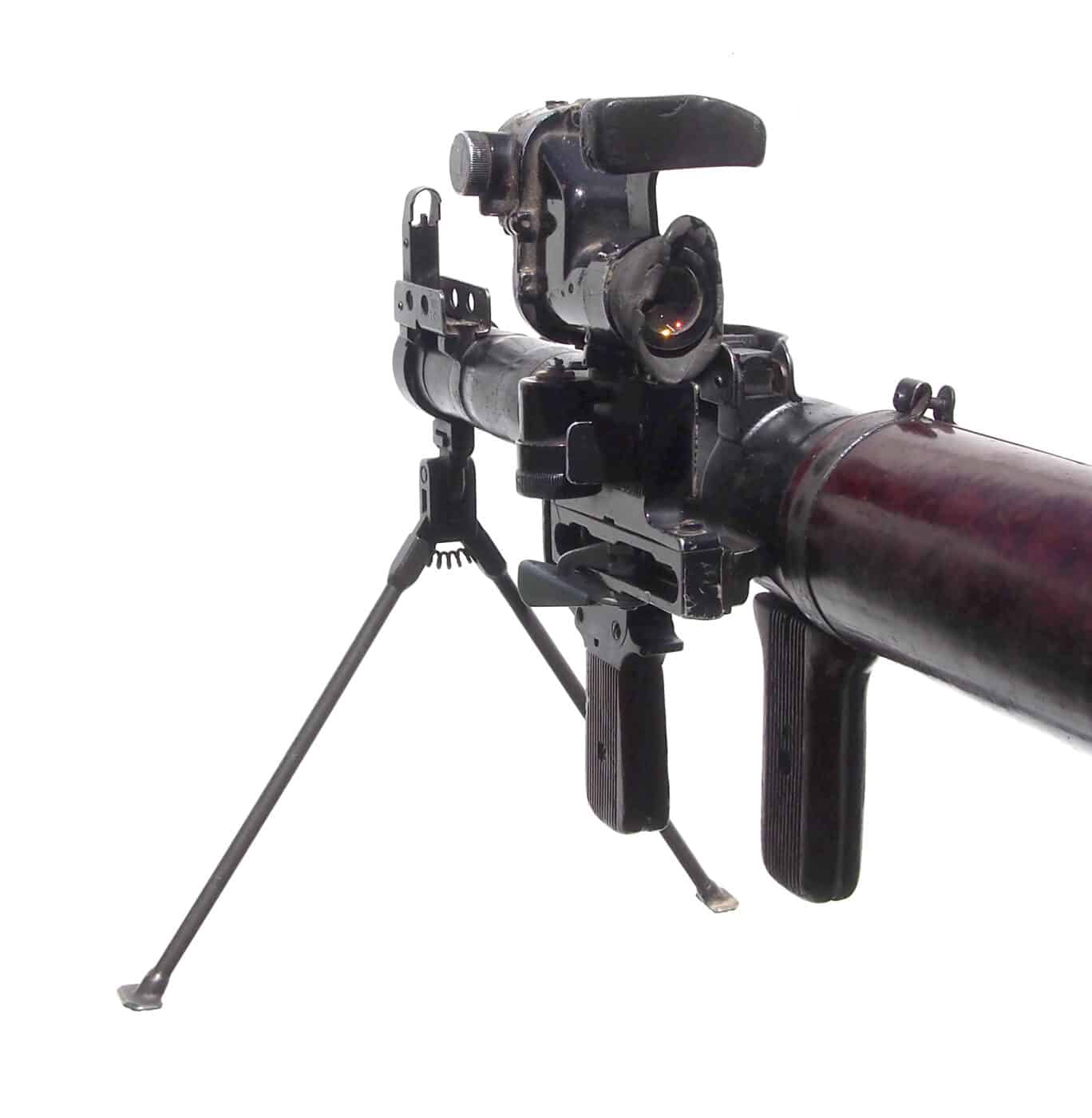
While it can be operated by a single soldier, like most man-portable anti-tank weapons, in practice, the RPG-7 is employed with a team. This team consists of a gunner and an assistant — where the second individual carries the extra rounds, loads the weapon but also defends the gunner from attack.
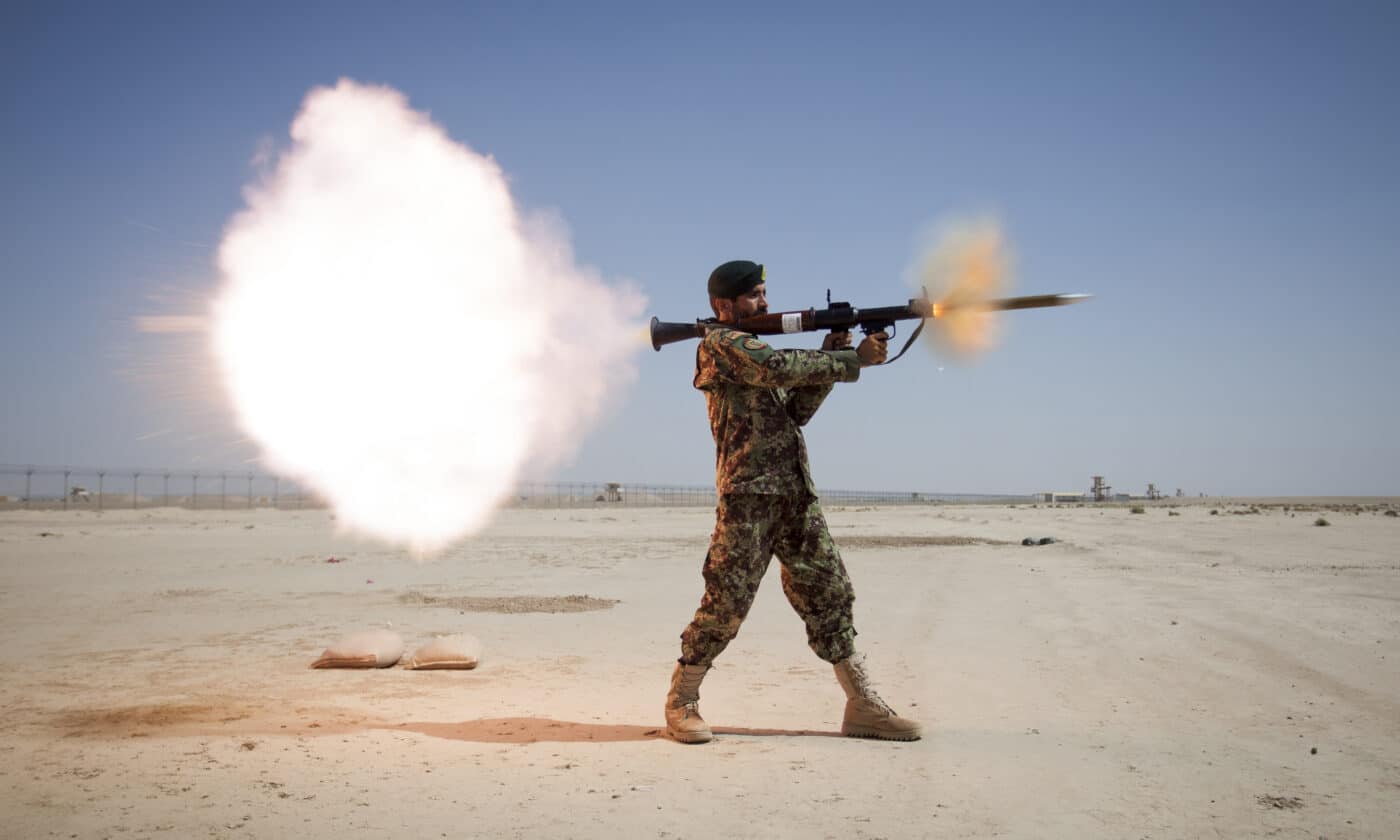
The RPG-7 has a maximum effective range of about 920 meters (3,000 feet), but it is generally considered to be most effective out to about 200 meters (650 feet). Even at that distance, it is estimated to only have a 50 percent chance of hitting a slow-moving target the size of a tank or other vehicle.
Yet, in its more than 60 years in service, the RPG-7 has been used against tanks, armored personnel carriers (APCs), buildings, fortifications and even low-flying helicopters. In fact, the RPG-7 has been more effective at shooting down helicopters than many Soviet-made man-portable air-defense missile systems — and it was such a weapon that was used to shoot down the low-flying American Black Hawk helicopters during the U.S. military’s 1993 raid in Mogadishu.
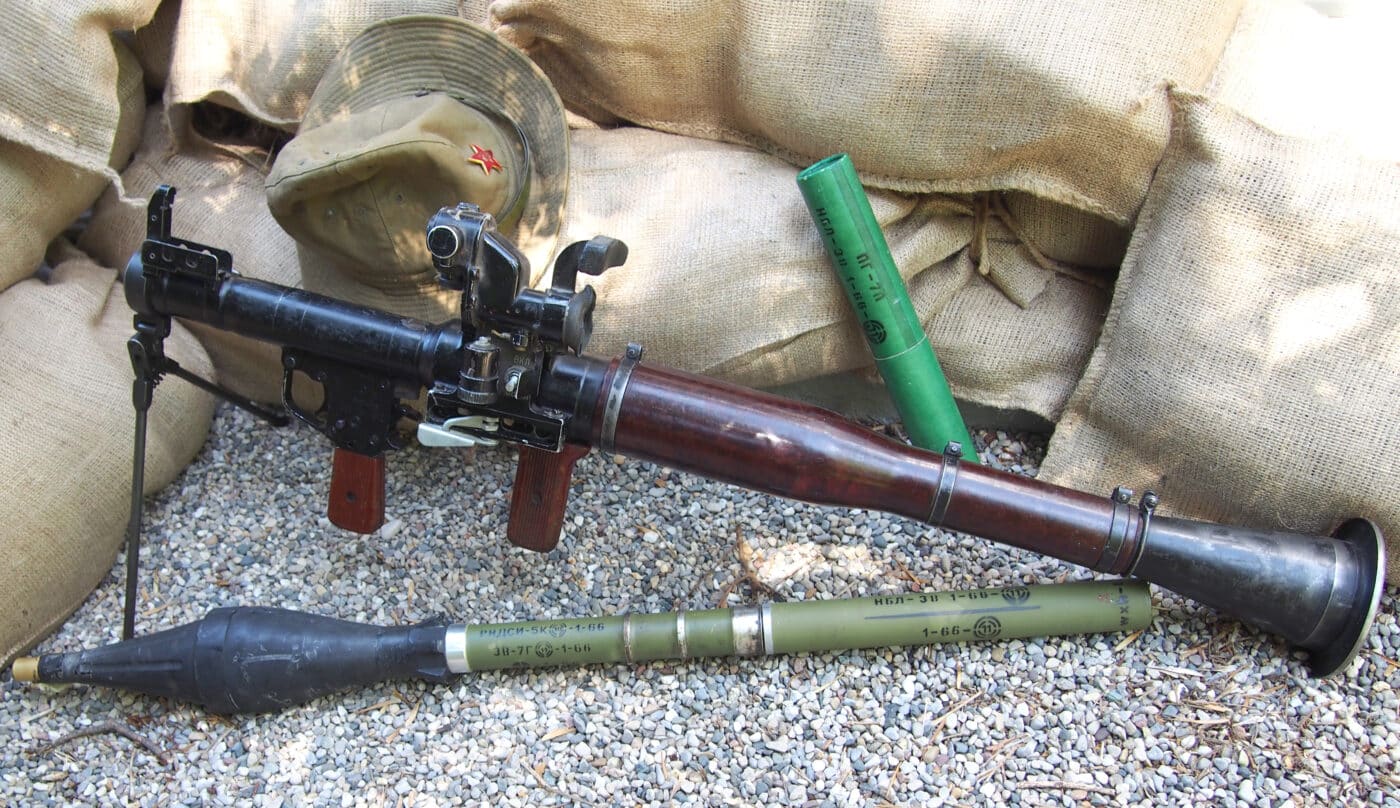
The RPG-7 had seen use in numerous conflicts around the world. Although its first use remains undetermined, some sources suggest Egyptian forces first employed it in combat during 1967’s Six Day War, but it also was used that same year in the Second Indo-China War in Vietnam by the People’s Army of Vietnam (PAVN). The man-portable rocket launcher was also employed by insurgent forces in the Portuguese Colonial War and the Rhodesian Bush War, while IRA factions also used it during The Troubles.
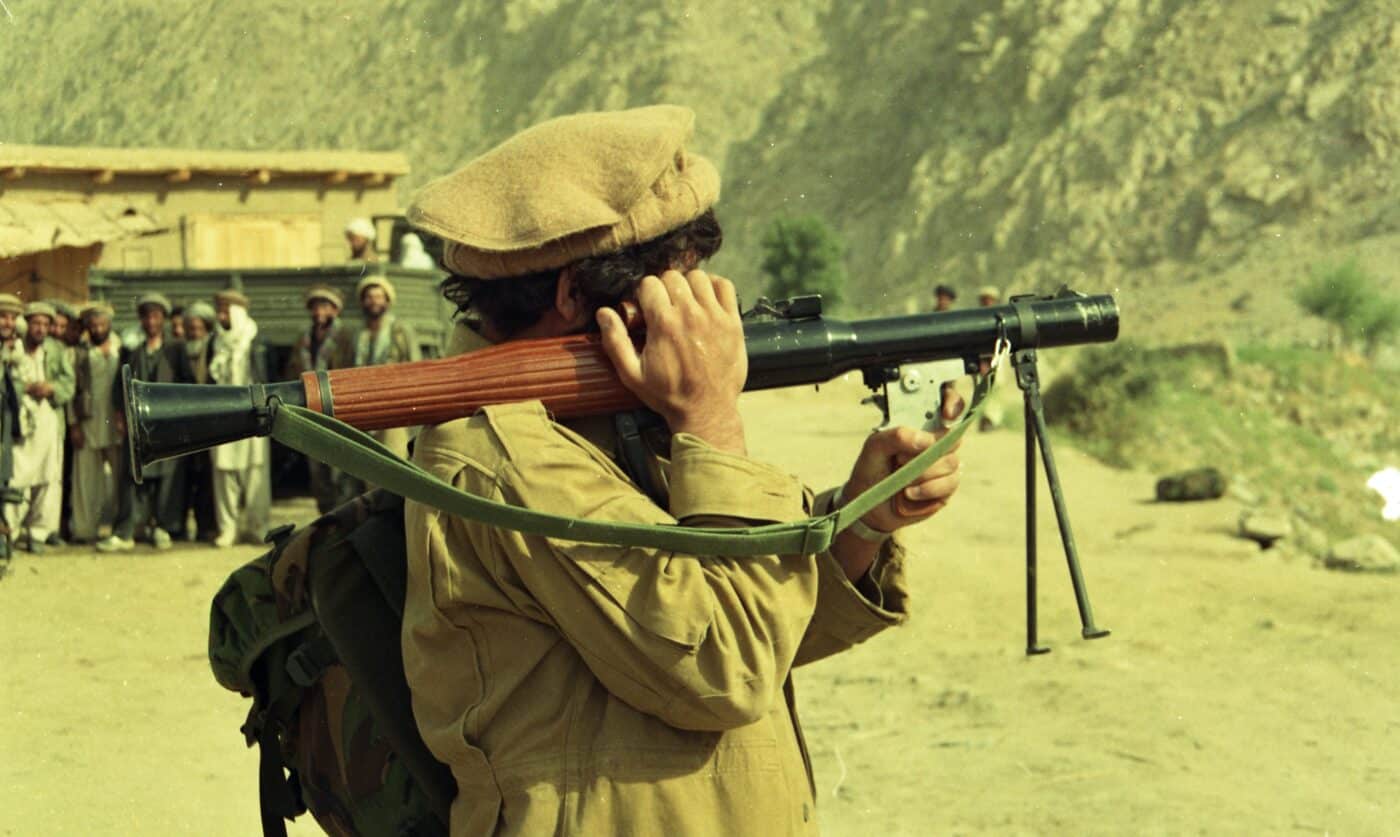
The weapon was copied by the Chinese and introduced as the Type 69, which was used by both sides in the Sino-Vietnamese War (1979), while both Soviet and Afghan forces used it during the decade-long Soviet-Afghan War (1979-1989). It subsequently saw use in the Gulf War (1990-91), the Yugoslav Civil Wars (1991-2001), the Somali Civil War (1991-present), the War in Afghanistan (2001-2021), the Syrian Civil War (2011-present) and it is now used by both sides in the Russo-Ukrainian War.
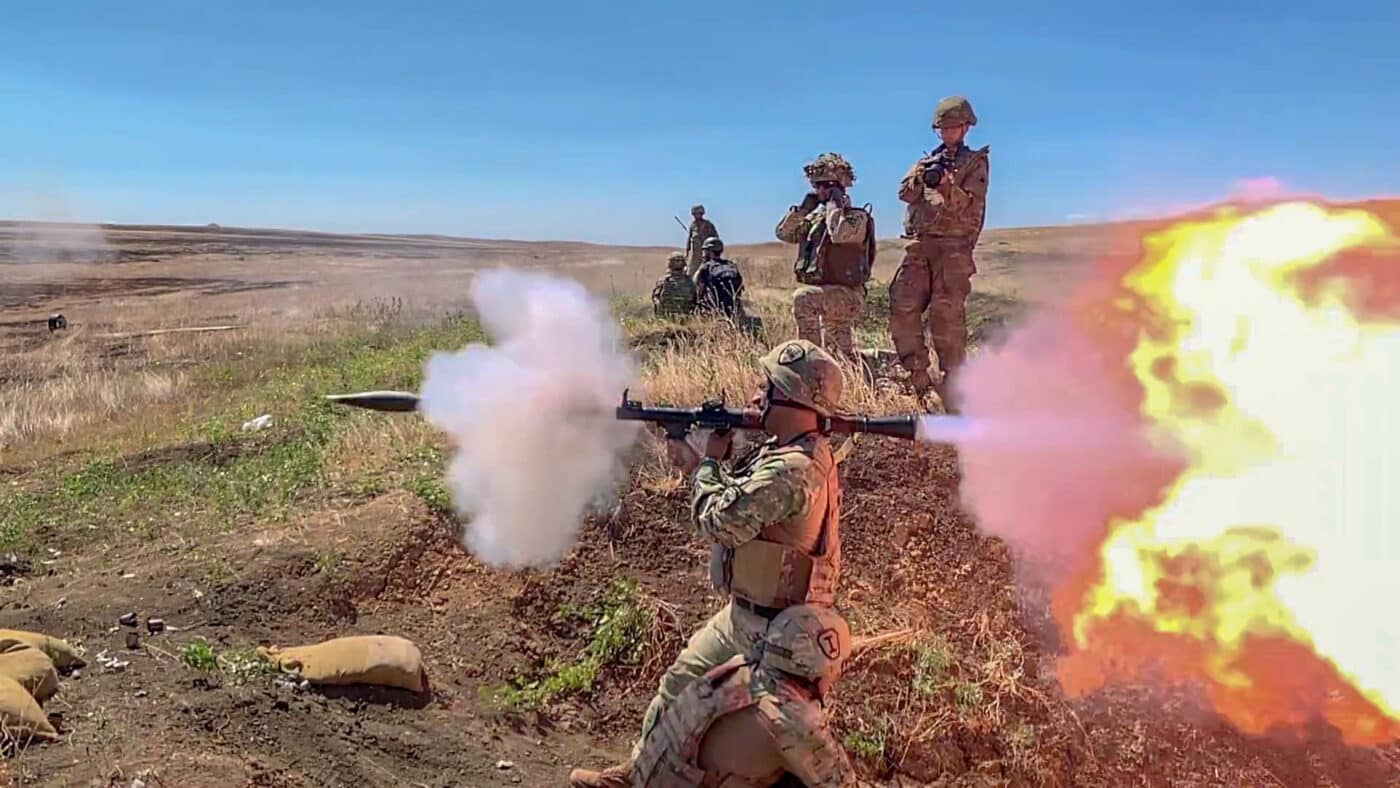
The RPG-7 continues to be produced in a number of countries, and it remains in service as it is relatively low-cost — with the launcher costing around $2,000 to produce and each rocket around $500. Even with its 50-50 chance of hitting a target, it is certainly a low-cost enough option.
RPG-7 in Popular Culture
Despite the fact that the RPG-7 was widely used by the PAVN and Viet Cong (VC) forces in the Second Indo-China War, the weapon was not seen in the early wave of Vietnam War movies. In fact, it only made its debut in the Soviet film Vesenniy Prizyv (Spring Conscription), where it was seen carried by a group of soldiers and never fired.
The weapon’s “western debut” was in the 1984 film Uncommon Valor, where it is seen in an early sequence of the film set during the war in Southeast Asia. It was a fake mockup, likely using a 1950s era RPG-2 modified to make it appear to the RPG-7. The same type of mockup was employed in a number of films including Red Dawn (1984), Back to the Future (1985), Spies Like Us (1985) and Rambo: First Blood Part II (1985).
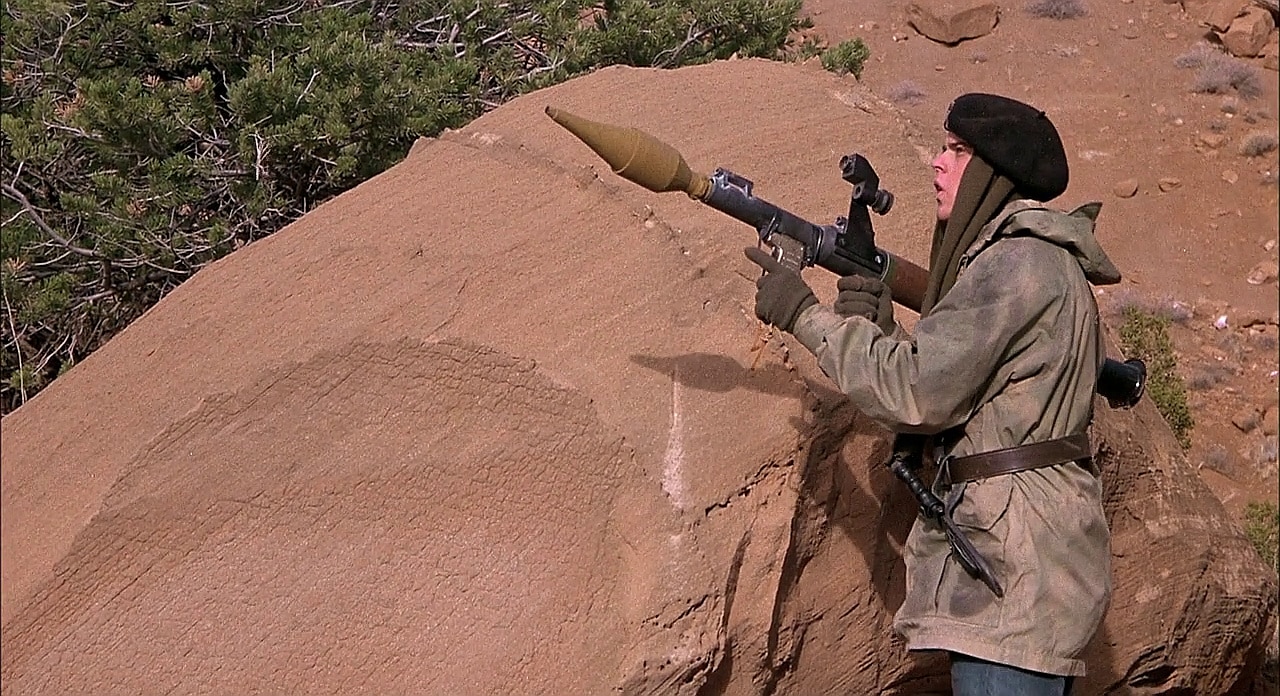
In fact, the first actual appearance of an RPG-7 in a non-Soviet-made film is arguably in 1986’s Royal Warriors, a Hong Kong action cinema release starring Michelle Yeoh. It was also the 1987 James Bond film The Living Daylights that was the first true “Western-made” movie to feature the anti-tank weapon, but it wasn’t actually seen in use.
Interestingly, it was only in the 1988 film The Beast of War, which was made in Israel but was about a Soviet tank crew in Afghanistan that is hunted by the Mujahedeen that first sees an RPG-7 actually used in a combat sequence. The weapon was likely among the Soviet-made equipment captured by the Israeli Defense Forces (IDF) from Egypt or Syria. The film was also notable for featuring a T-55 mocked up to resemble a more modern Soviet tank.
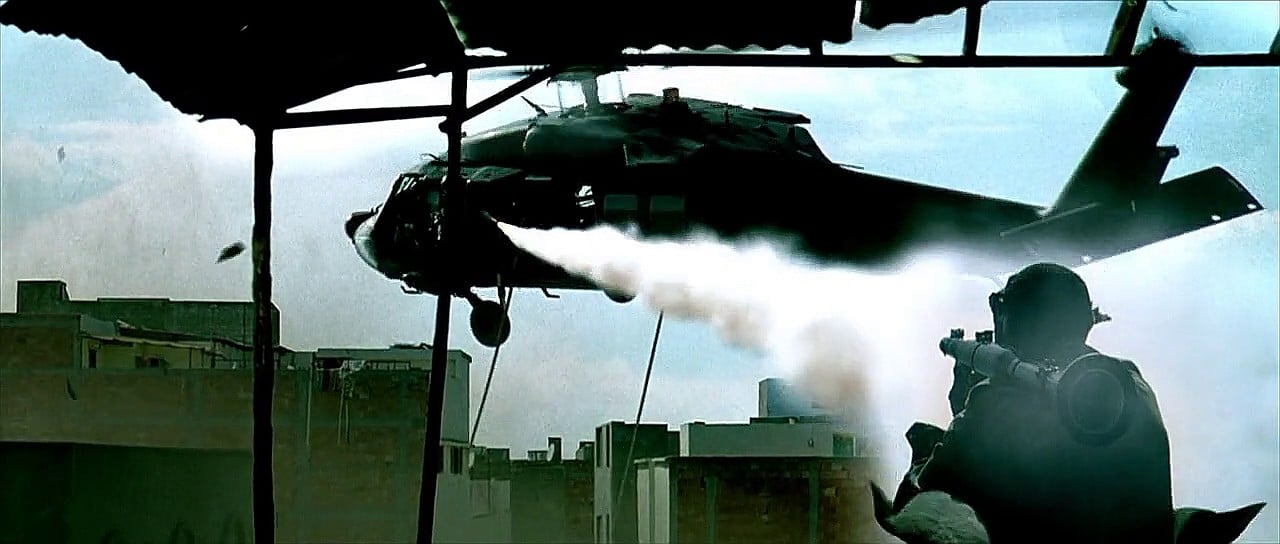
The RPG-7, which has since been seen in dozens of films, has certainly become iconic — and received a true “close-up” in the 2001 film Black Hawk Down, where the weapon was successfully employed to shoot down the two aforementioned U.S. Army helicopters.
The anti-tank weapon has become a favorite in dozens of video games as well, first appearing in the real-time tactical wargame Fallout Tactics in 2001, but later appearing in such titles as America’s Army (2002), Grand Theft Auto: Vice City (2002), Battlefield: Vietnam (2004), Metal Gear Solid 3: Snake Eater (2004), Call of Duty: Modern Warfare (2007), Far Cry 2 (2008), Battlefield 3 (2011), Rising Storm 2: Vietnam (2017), Insurgency: Sandstorm (2018) and Battlefield 2042 (2021).
How to Collect the RPG-7
As with other anti-tank weapons, collecting the RPG-7 is possible — provided the weapon has been properly deactivated. A live RPG-7 would be considered an NFA (National Firearms Act) item, as would any live rockets. The RPG-7 was actually a rather uncommon item to be found until the end of the Cold War.
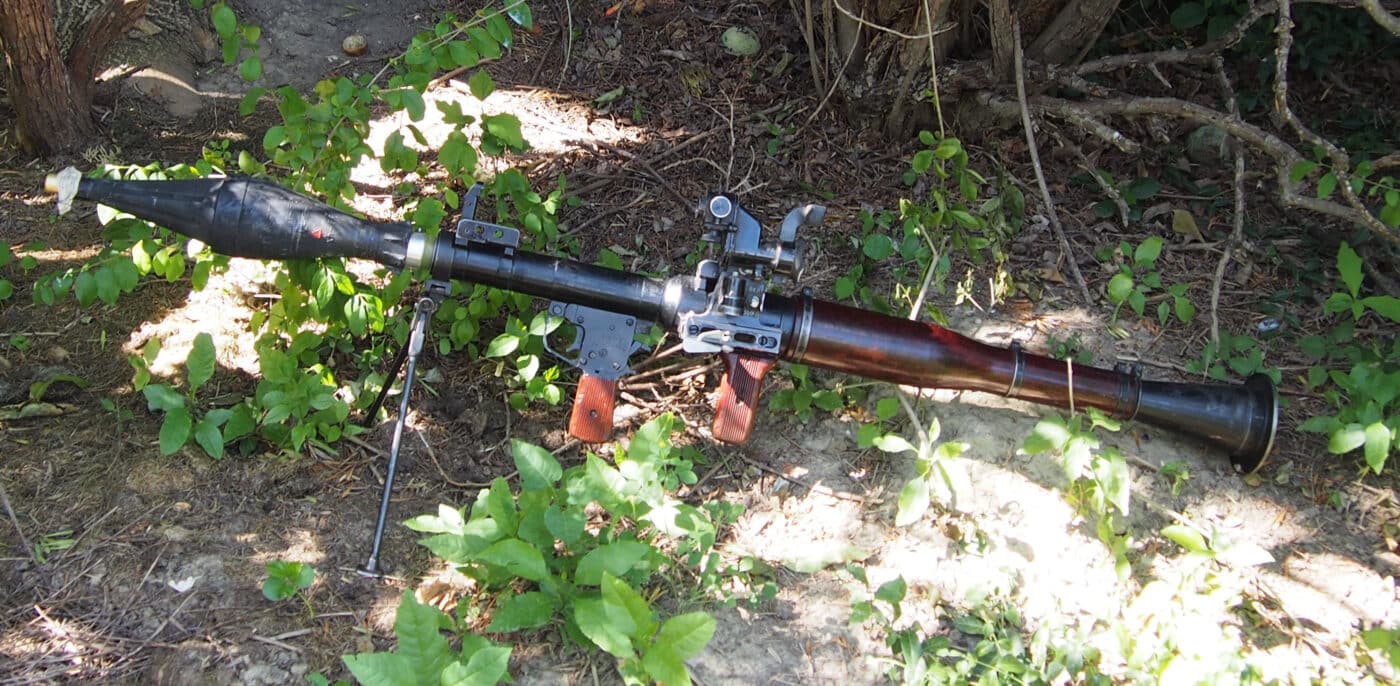
However, since the early 2000s, when countries including Bulgaria and Romania joined NATO, surplus stocks of deactivated RPG-7s have come onto the collector’s market. These were either made in the former Soviet Union or other former Warsaw Pact nations, but these are otherwise indistinguishable. To be “legal” for civilian ownership, a hole must be cut in the barrel the same size as the diameter of the muzzle. Often times this was done under the wood insulation to preserve the look of the weapon for display. However, this is considered acceptable. In addition, a rod should be welded in place to keep a round from being fully loaded into the tube, while the firing pin should be removed.
Today RPG-7s remain scarce and prices have risen accordingly, as it is popular with Vietnam War, Cold War, Global War on Terror, and even modern military collectors. There have been many iconic anti-tank weapons, but the RPG-7 is still in a league all its own.
Editor’s Note: Be sure to check out The Armory Life Forum, where you can comment about our daily articles, as well as just talk guns and gear. Click the “Go To Forum Thread” link below to jump in!
Join the Discussion
Continue Reading
Did you enjoy this article?

 171
171






